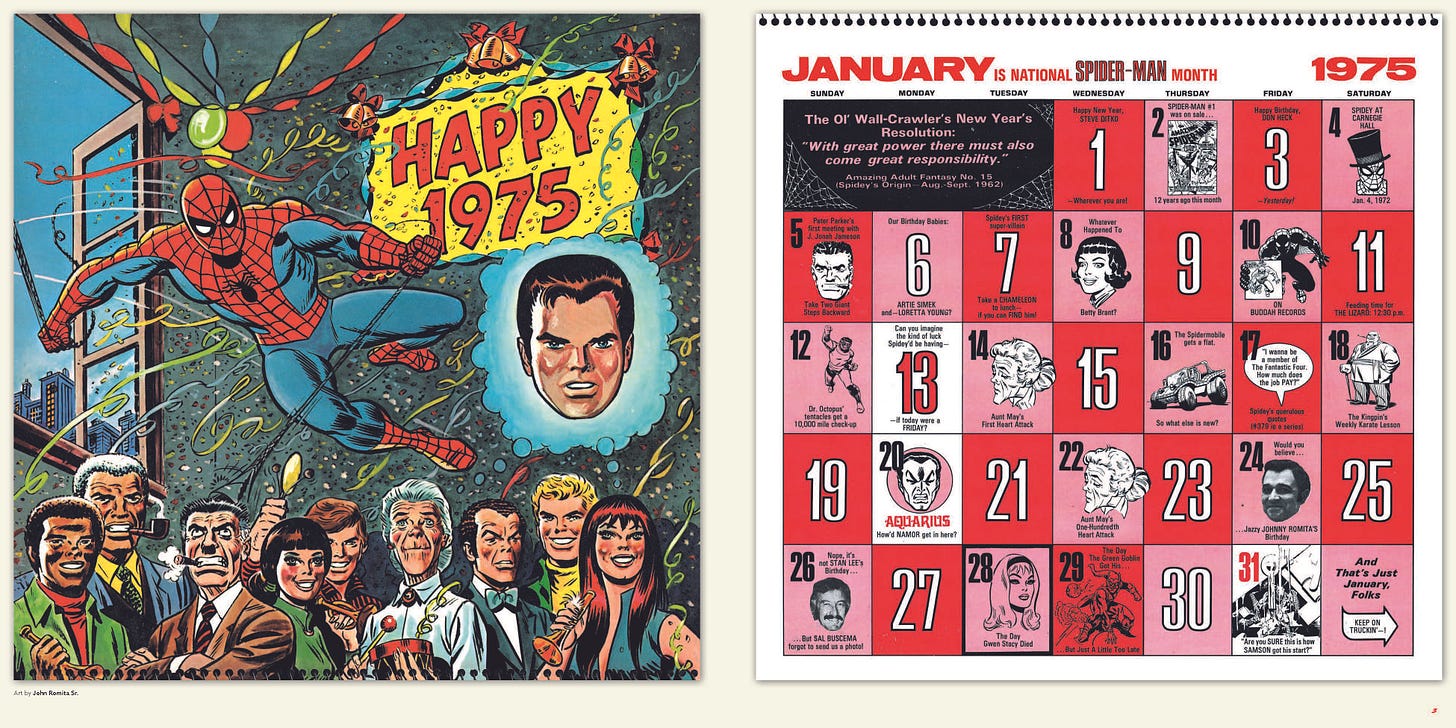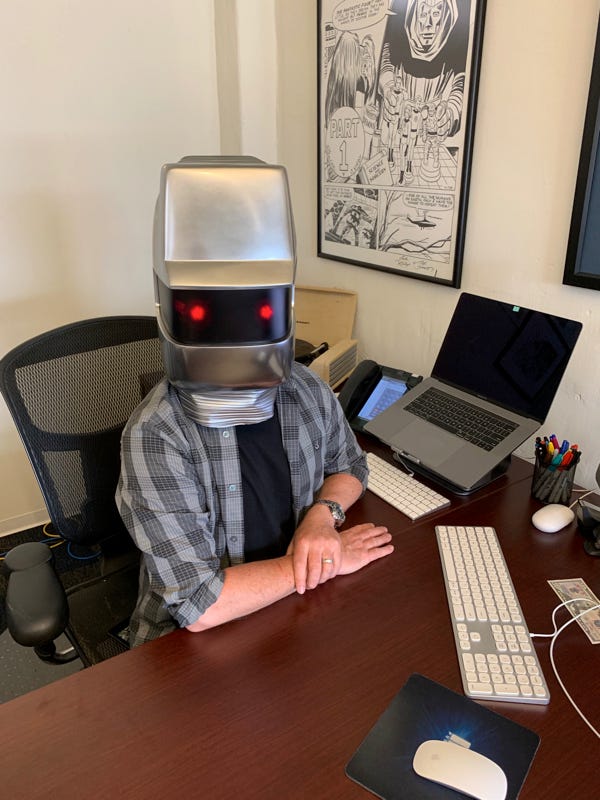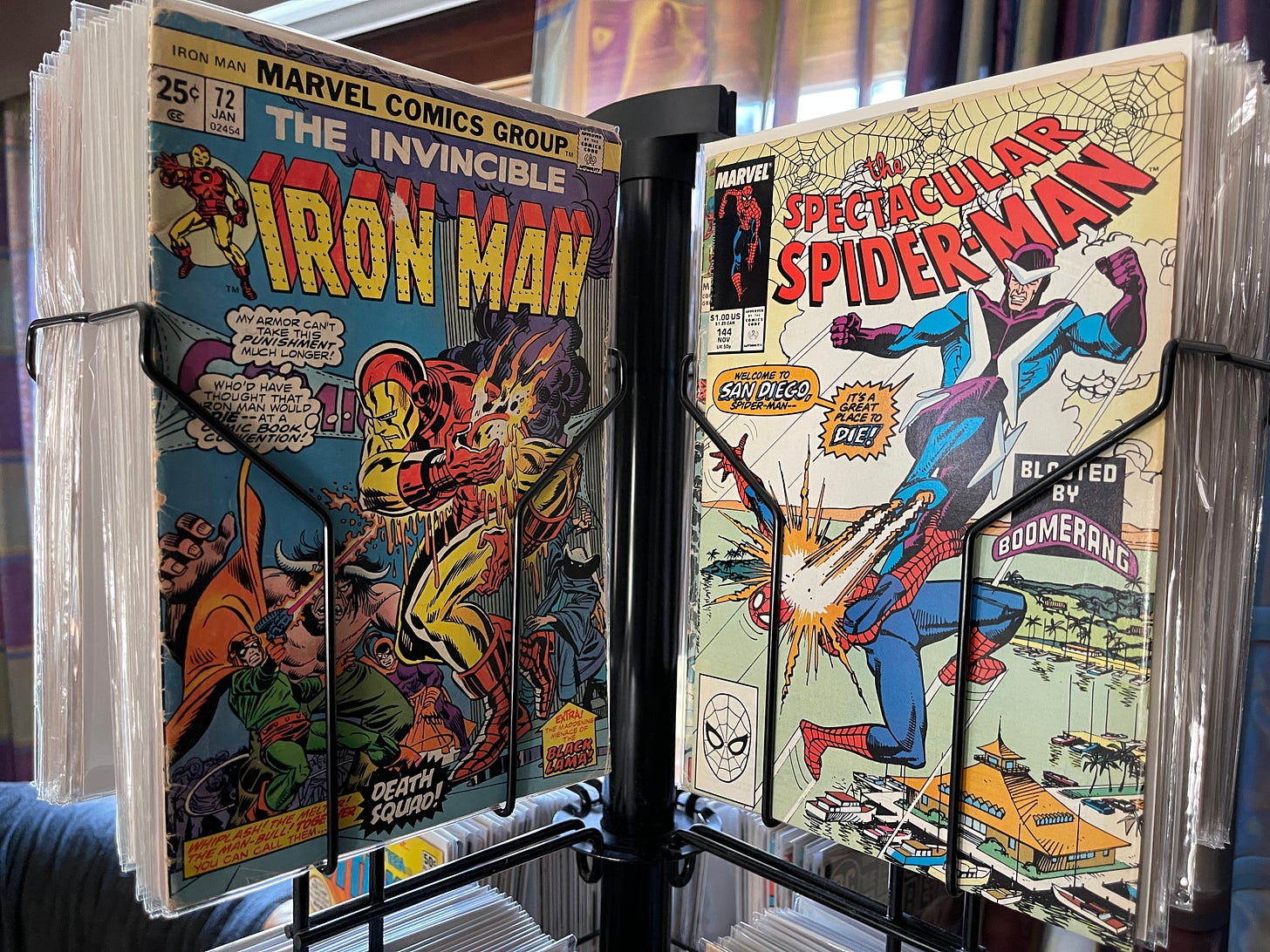Tales of Syzpense #15
Tales of SDCC Suspense, and a few more public- (well, self-) service announcements of upcoming books.
The thing about comic conventions is that for whatever fatigue you might feel after they’re done—especially in the case of a 5-day behemoth like this past weekend’s San Diego Comic-Con—my lasting impression is always enthusiasm for making comics. For collaborating with the kinds of people who inspired me all weekend.
It’s a feeling that’s always enhanced by attending the Eisner Awards as part of SDCC, too — just being in the room with generations of talent is always invigorating.
I mean, don’t get me wrong, I would’ve loved for our Rain graphic novel to have been awarded with the Eisner trophy for Best Adaptation from Another Medium. But really, just seeing the book, and its artist Zoe Thorogood, nominated across multiple categories, was a thrill. And seeing the wider list of nominees across all the categories at The Eisners is always a reminder of the breadth of talent working on comics at all levels.
Zoe did win an Eisner last week, too — she took home the Russ Manning Promising Newcomer award — a promise she’s already been delivering on in so many ways. And will continue to do so in projects like the recently announced Hack/Slash miniseries she’s writing and drawing.
Other good things about the con: much was made of the lack of studio presence at this year’s show, and other than missing the usual Saturday easing-up of floor traffic because 6,000 people sequester themselves in Hall H all day, it seemed most everyone was happy with how things played out. Panel attendance seemed up across the board, and artists alley was thriving (detrimentally so in terms of it being possible to walk down some aisles and catch up with some people. I’d sure love it if they’d kept the wider aisles they offered in the con’s post-covid return last year). It all felt like a good — albeit huge and hectic — comic-focused show.
During covid, and after the loss of so many great comic talents the last couple of years, I told myself I needed to be much better about taking pictures with friends and acquaintances at shows. Of course I’ve not really done that, but I did capture a few good moments at the show, anyway. The last image in this group, the Eisner Awards cookie, came courtesy of Eisner Awards stablemate Barbra Dillon, who was nice enough to supply those to everyone at our table. So who needs an award, anyway? Those trophies aren’t even edible.
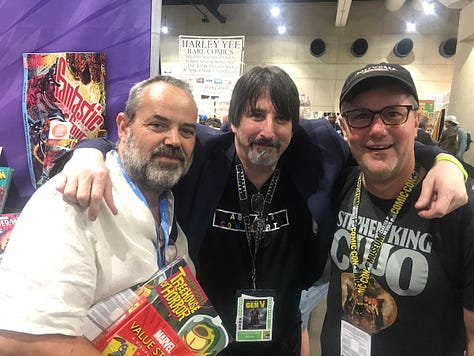





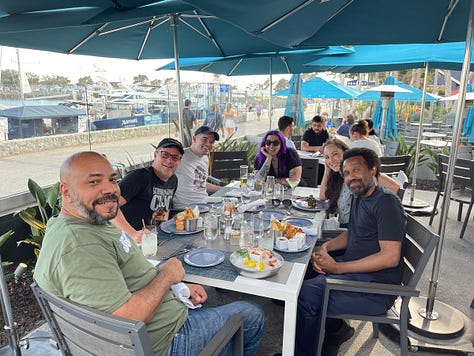


84 Months of Sundays
The first full day of SDCC got off to a nice start for me, since I made a guest-appearance on the Marvel/Abrams ComicArts panel, where they announced an upcoming book I wrote and put together for them, The Mighty Marvel Calendar Book: A Visual History.
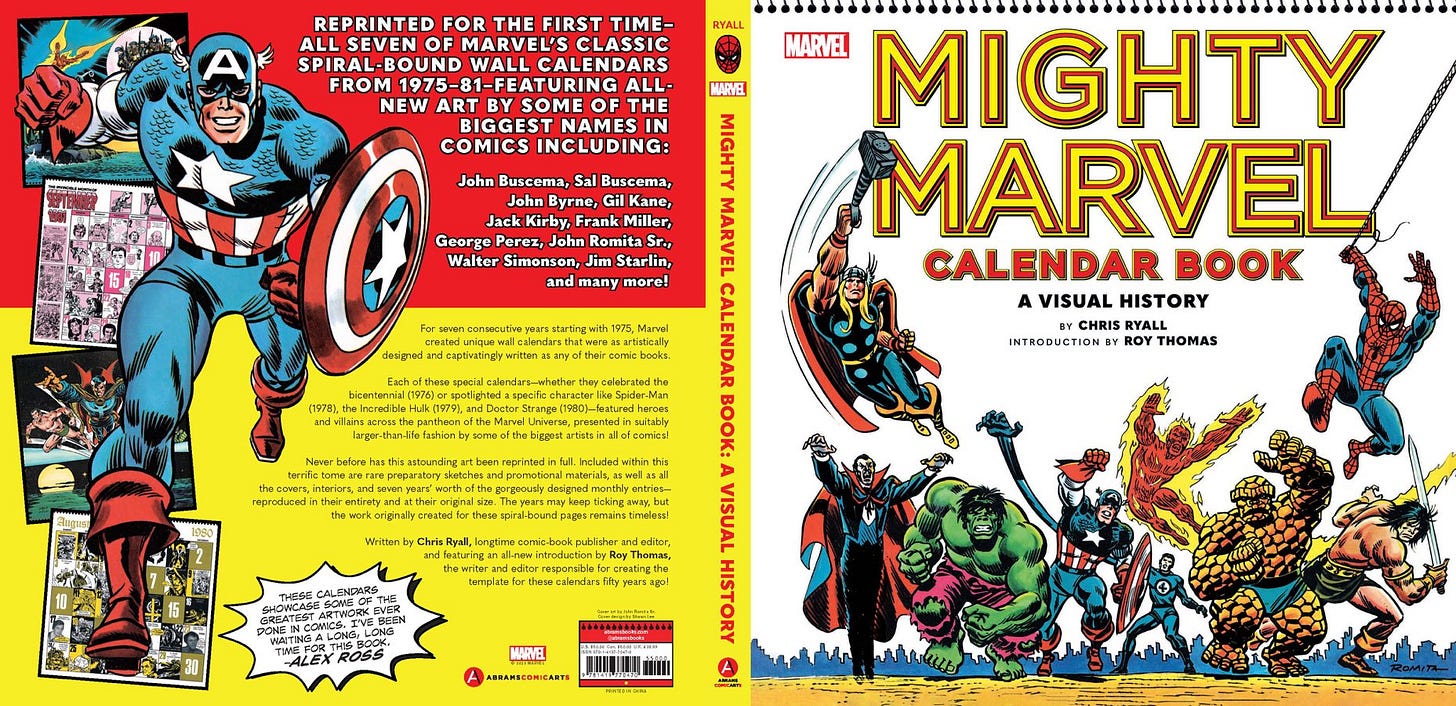
This is a book I’ve wanted to do for a long time. And Abrams makes really beautiful, lasting books of all sizes, so I’m particularly happy it was able to come together there, and with editor Charlie Kochman and his team. It’s one of those books that I know would make the 10-year-old me very happy, so it’s even more special in that regard.
The book itself will be a 13” x 13” hardcover collection of these truly unique and visually dazzling calendars that Marvel produced from 1975-1981. Each calendar carried its own theme—everything from a celebration of the country’s bicentennial to Marvel’s 20th anniversary to character-specific calendars focused on Spider-Man, the Hulk (“National TV Star!” as that calendar cover proclaims), and Doctor Strange.
There are a few things that make these calendars particular stand-outs. First, they all featured new splash images for each month drawn by Marvel’s top talents at the time: Jack Kirby, John Romita, John Byrne, George Perez, Frank Miller, Gil Kane, Jim Starlin… and on and on. And, in an industry that constantly repackages and repurposes every bit of its output, these images have surprisingly never been reprinted in full. Only a few of them have ever surfaced at all in the backs of other books. So this will be a nice showcase of an amazing array of artwork created by basically the best of the Bronze Age.
The other special part about these seven calendars are the fact that all the monthly calendar grids—typically just plain white boxes that show the day and date, and maybe a small mention of a national holiday—were likewise treated as art pieces on their own. Each month’s grid was filled with copious amounts of Marvel information and images: art and quotes clipped from comics, trivia and past release dates, birthdays and photos of creators at a time when most fans really had no good way to see what their favorite creators even looked like. The spiral-bound calendars presented each month like this albeit with the art atop the dates like any wall-hanging calendar. We’ll place them side by side like the image below, so you won’t have to hold the book vertically to see everything.
The calendars also featured great new cover images by the likes of John Romita Sr. and Dave Cockrum, and all of them included a handful of extra pages filled with other interesting bits of Marvel lore beyond just the 12-month breakdown. This book will include all of that material as well — cover to cover reproductions, as it were — and I provided both the preface and introductory text pieces for each year, too. Former Marvel editor-in-chief Roy Thomas—the chief architect and writer of the first calendar in this series—contributed a nice introduction that detailed his recollection of how these calendars came together in the first place.
In the back of the book, I unearthed various house ads, creator memos and letters, original art pieces, and other lost supplementary items, too. Among my favorites there are the hand-drawn cover sketches and calendar-grid breakdowns by the 1979 calendar-writer, David Anthony Kraft. It all really just helps emphasize the hand-made nature of these great calendars. Roy and I added bits of additional context and commentary to this material, too.
Years ago, when I was publishing a number of Hasbro-related properties, I saw that artist Dusty Abell created some new calendar entries that emulated this format, and I thought they looked great. Here’s an example of what he did. This made me want to partner with Dusty to create a similar calendar featuring Transformers, G.I. Joe, Rom, My Little Pony, etc. I started scribbling down notes. And then I realized that, even in an era where computers made the production end so much easier than Marvel’s production team had it in the ‘70s, it was gonna be a mountain of work. And amidst everything else we were doing, it just didn’t make sense to pursue it. Which made me admire even more the work that John Romita Sr. and the Marvel editorial and production crews put into the production of these seven calendars.
And to top off everything else that makes me happy about this book finally becoming real, it was designed by my pal (and Rain letterer/Eisner-winning designer) Shawn Lee.
The book is coming your way in spring 2024 but up for preorder now directly from Abrams if you’re so inclined to check it out.
(And for anyone like me who has any of these old calendars… well, calendar dates repeat every so often, so you can hang, say, the 1978 Spider-Man calendar in 2023, and the dates and dates line up. Every now and then, a leap year will jack up the schedule, but it was fun to pull these out and hang them when the dates do line up. However, I don’t recommend trying to hang the book itself on your wall, since it’d require a much stronger wall and a thick spike instead of a thumbtack to hold it in place.
The ROM-an Empire
One other little bit of Marvel-n-me news that I can talk about now is that the publisher was kind enough to ask me to write the introduction for the first volume of their long-time-coming Rom Spaceknight Omnibus collection.
Rom was a childhood favorite of mine, a series whose praises I’ve been singing to basically anyone who’ll listen. (I’ve seen betting pools on how long it’ll take me to bring up Rom on any convention panel discussing licensed comics. People taking the over usually lose.)
Rom is a Marvel comic series published from 1979 to 1986. Due to various legal entanglements and split ownership of the characters in the series, it’s never been reprinted in any fashion until now. I tried to make a reprint series happen for years and couldn’t make it work. To the point where I actually had my original series bound into hardcover volumes since I figured that was the only way they’d ever be able to sit on my bookshelf. If I hadn’t then bought a second complete run of the comics themselves, I’d be looking to see if there was any kind of “tattoo-removal”-type service for bound comics…
But the good news is, finally everyone can see what us ROM fans liked about the series. Marvel will be releasing the entire series — 75 issues, 4 annuals, a few key tie-in issues — over the course of three oversize hardcovers. Volume 1 is in stores January 2024. I’m happy to be able to introduce the material collected in that 700-page first volume, so I can lay out not only the character’s toy-based origins but also discuss why the series and the work done by the comic’s co-creators Bill Mantlo and Sal Buscema, is such a notable if little-seen corner of the Marvel universe.
Ahead of the first volume, Marvel is also releasing a replica edition Rom Spaceknight #1 in September. It’s a nice and affordable way to sample the material, get a sense of who Rom is, and then get ready for the Omnibus that kicks off 2024.
And if you’re so inclined to check out even more comics featuring Rom, I co-wrote a Rom revival comic alongside Christos Gage in 2016. That series—which featured Rom and a version of the Dire Wraiths but not the Marvel Universe characters that populated the original series, has been collected in a book called Rom: Cold Fire, Hot War. I also wrote a 2019 miniseries, Rom: Dire Wraiths, set on the moon in 1969 (you only thought Michael Collins was left along in space while his partners walked the lunar surface). Both are out of print now but I’ve still got copies of both the comics and the TPBs, so drop me a line if you need help satisfying all your Rom-related needs until the Marvel reissues are released.

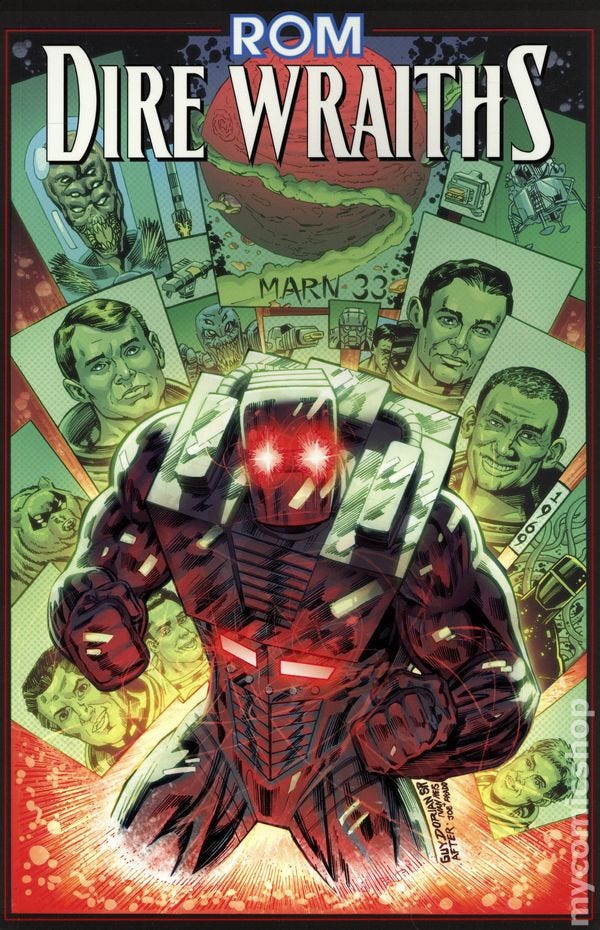
Basically, all of this amounts to Marvel enabling to keep talking about the series at every possible opportunity, and I appreciate that. So look for additional Rom-related newsletters in the future, and plenty of art and trivia I’ve accumulated along the way.
Modern Tales
In other coming-soon news, Ashley Wood and I finalized the second issue of our new Tales of Syzpense comic, so that one heads off to print next week and then on to comic shops on August 23.
This coming Monday, July 31, is the final day that the issue can be pre-ordered through comic shops so as always, if you’re interested in any coming comic, it’s very helpful to both retailers and creators if you let your local shop know ahead of time.
Here’s preview of the issue, which once again includes two 12-pages stories and a good handful of additional material (no ads). There are 4 covers for the issue, presented in order (A-D) below). Two of the covers and the Les Mort 13 story are by Ashley Wood and writer T.P. Louise, and my story, Dreamweaver, is drawn by co-creator Nelson Daniel. If it helps your retailer to have the specific order codes for each cover, they’re here:
Tales of Syzpense #2A: JUN230365
Tales of Syzpense #2B (Nelson Daniel): JUN230366
Tales of Syzpense #2C (Nelson Daniel Tales of Suspense homage): JUN230367
Tales of Syzpense #2D: JUN230368
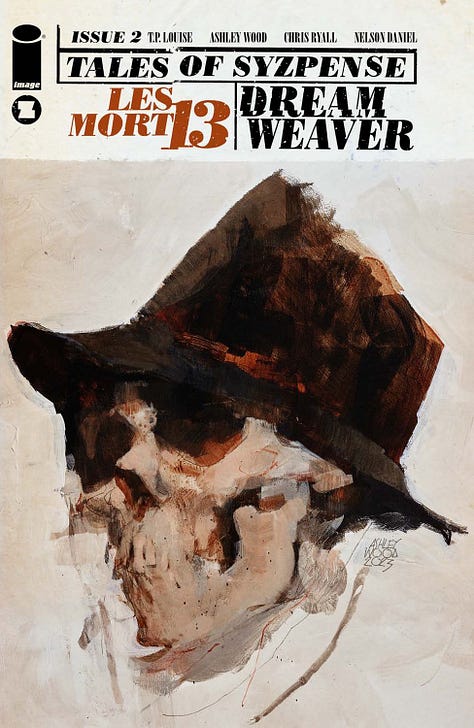
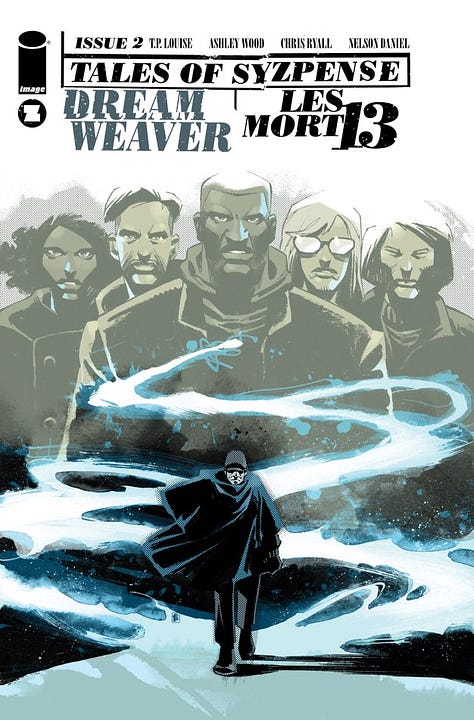

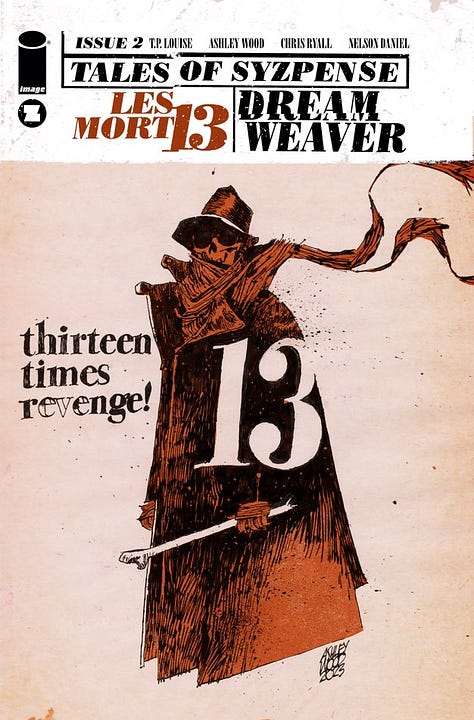
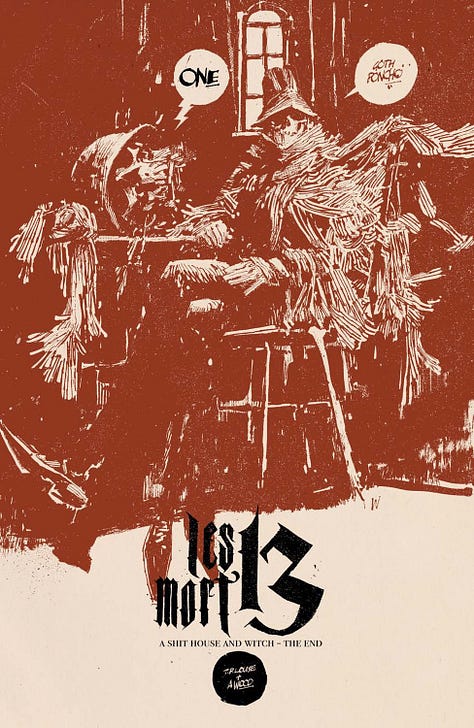
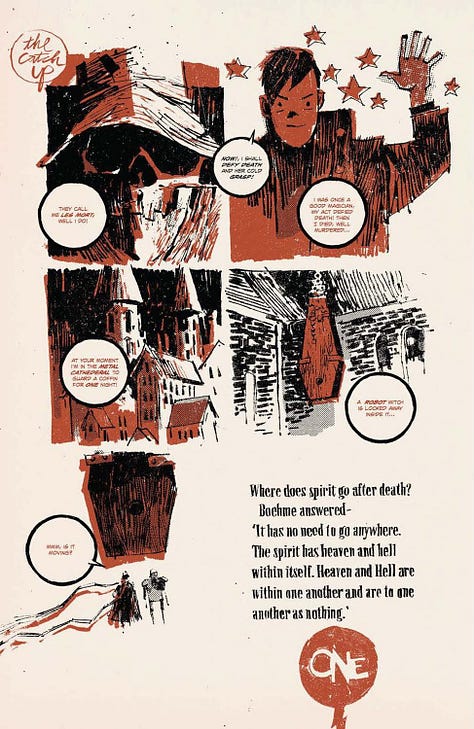
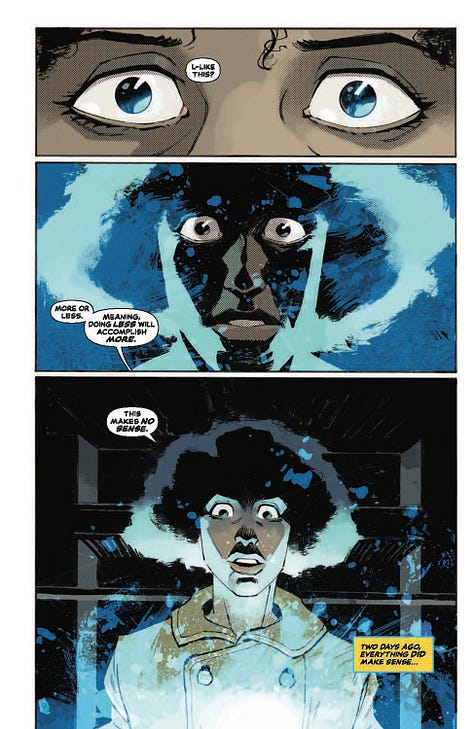


Spinner Rack Comic-Con
This is admittedly a weak offering this week, but it’s all I have for this particular theme, which is fitting to wrap up Comic-Con. Heading into the show, I outfitted my office spinner rack with a couple covers that tied in nicely to the con and its location: Invincible Iron Man 72, which saw Tony Stark attend SDCC in costume (where he was promptly harangued by a fan for his costume not looking right; this was a pointed commentary about the much-reviled nose that was added to Iron Man’s mask for a short time), and The Spectacular Spider-Man 144, whose story was set near the bay where the conventional hall is located.
I’m sure there are other covers that feature comic conventions in some way — modern examples abound, I know that much. I’ve done a couple myself. But my aim is to only include examples that are less self-aware than modern covers — so if you’re aware of others I’m missing, as always, please feel free to suggest anything that comes to mind.
I typically only show covers as part of this spinner rack feature but this week, it’s worth including a few interior pages from Iron Man 72, too, I think. Not just because I find Tony’s early-‘70s San Diego nightlife options amusing, but also because of the comic-con guests his newspaper mentions (one of whom I had breakfast with at this past weekend’s con, so it’s nice that things haven’t changed that much). And the convention Tony attends is at the El Cortez Hotel, the site of the first San Diego Comic-Con.
And, y’know, as a longtime Dodgers fan, I also appreciate the newspaper Tony’s reading including. headline about the Dodgers beating the Padres for the third straight time…
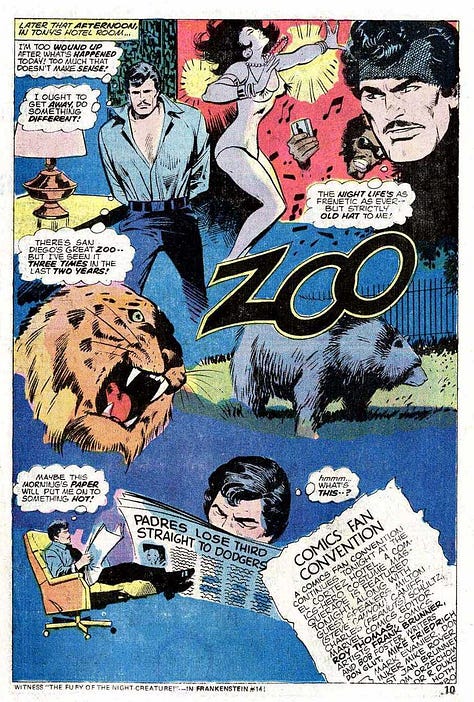
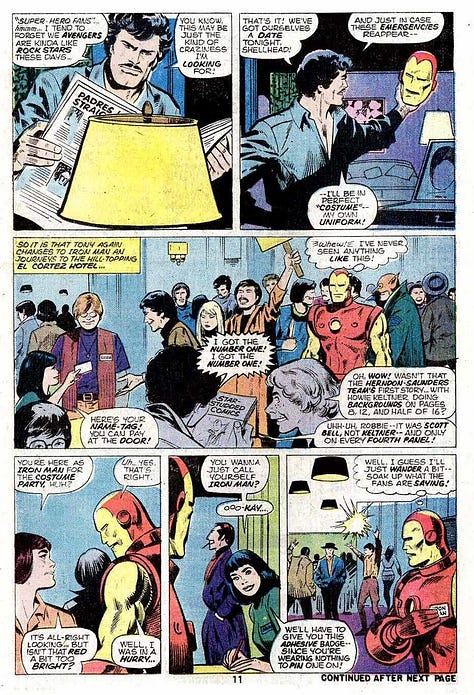

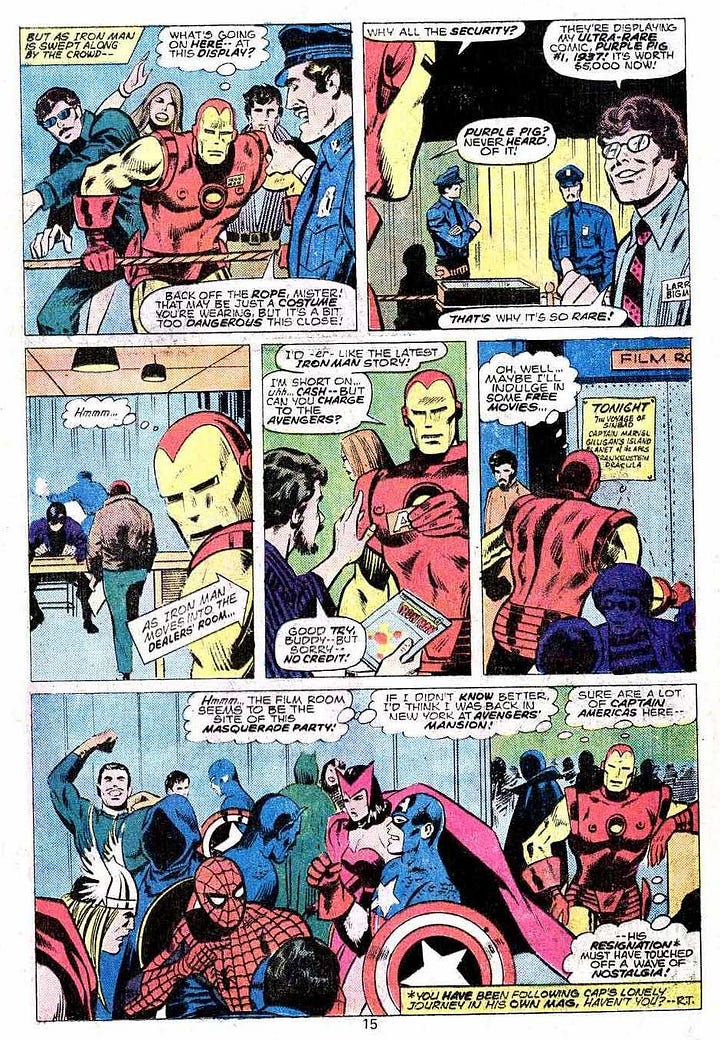
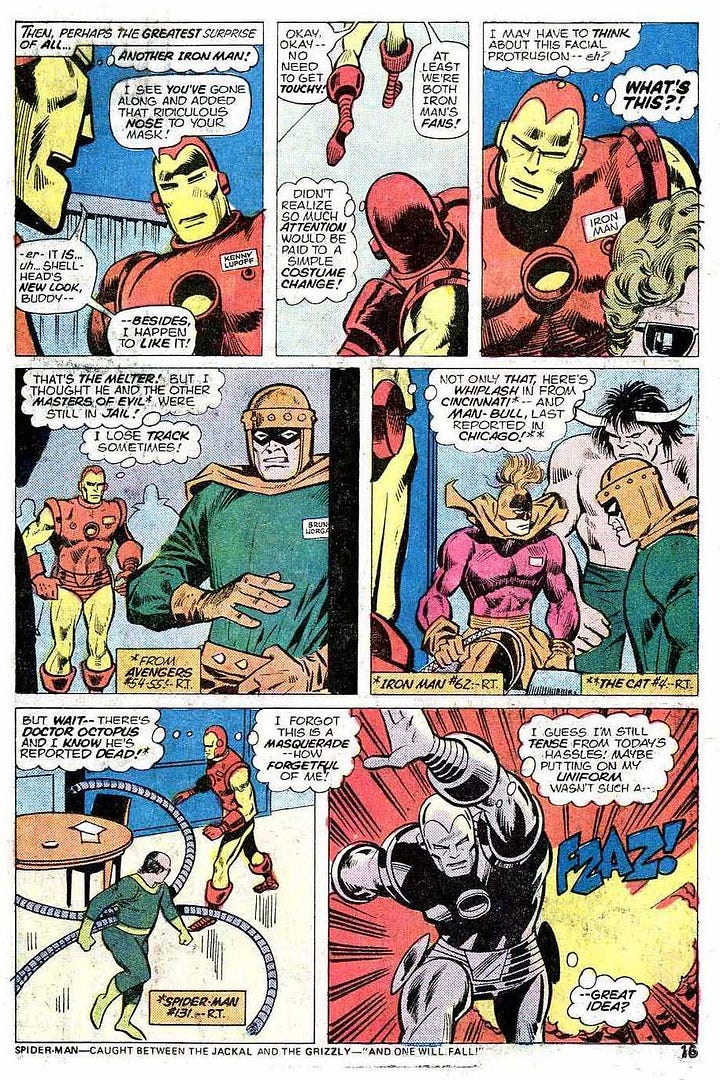
Longbox Hunters
Finally, it’s never a complete convention for me without a little back issue-diving. I usually try to reserve a couple hours on Sunday for just that purpose — time to put aside all meetings, events, and panels, and just go spend time wandering the retail area, looking for cool comics and things. I don’t enter into it with any kind of list, and I’m not out to fill in holes in the collection. If anything, I’ve been trying to reduce the overall collection and just grab things that catch my eye or, better, that help me fill out future spinner-rack themes. This year was no different, and I ended the con with a nice random selection of books, pictured below. I always love when artists homage their own covers, so that Mighty Mouse comic, with the great George Perez offering a funny-animal version of his landmark Crisis on Infinite Earths 7 cover, made me smile. As George’s work always does. A satisfying end to my 27th consecutive SDCC.






